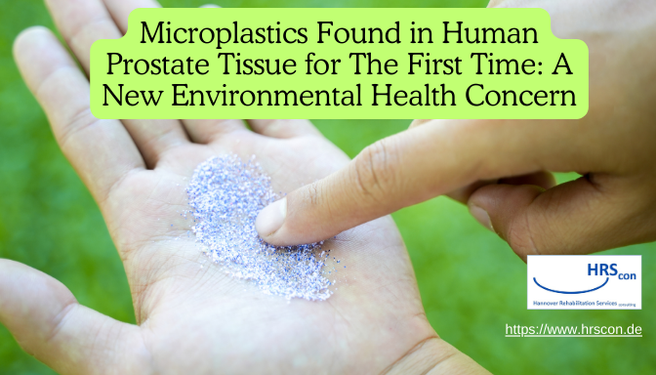Microplastics, tiny plastic particles pervasive in the environment, have become a significant concern due to their ubiquitous presence and potential health impacts. These pollutants are categorized by size into nanoplastics (1 to 1000 nm), microplastics (1 to 1000 μm), mesoplastics (1 to 10 mm), and macroplastics (1 cm and larger). Since the 1950s, plastic production has skyrocketed from 1.7 million tons to nearly 400 million tons in 2023. Excluding about 1% that are bioplastics, most plastics are not biodegradable, leading to widespread environmental contamination. Recent research reveals that these particles accumulate in various environments and living organisms, raising alarms about their potential effects on human health.
Microplastics in the Environment
Research has detected microplastics in marine water, sediments, freshwater, sea salt, food, honey, seafood, and fish globally. These particles have been found not only in the gastrointestinal tracts of marine animals but also in various cells and tissues of mice. This widespread contamination suggests that microplastics are infiltrating human food sources and potentially accumulating in human bodies. While ingestion is a common route of exposure, inhalation and dermal contact also contribute. Airborne microplastics originate from synthetic material abrasion and urban dust. Personal care products like shampoos, soaps, and toothpaste also contain plastic particles, increasing daily exposure.
Microplastics in Human Body Tissues
Studies have found microplastic fibers in human lung biopsies, including cancer tissues. Chemicals like Bisphenol A, used in plastic production, have been detected in breast milk and infant urine. Austrian scientists identified nine types of microplastics in human stool, with polypropylene and polyethylene terephthalate being the most abundant. Italian researchers found microplastics in human placenta, urine, semen, meconium, colectomy samples, cardiac tissues, saphenous vein tissues, and cirrhotic liver samples. Recently, microplastics were confirmed in urine and kidney tissues. A study found that about 80% of people tested had microplastic particles in their blood, suggesting that these particles could be transported throughout the body.
Prostate Tissue Study
A recent study aimed to investigate the presence of microplastics in human prostate tissue. Prostate tissues from 12 patients who underwent Trans Urethral Resection of the Prostate (TUR-P) were analyzed. The tissues were examined under a light microscope for microplastic particles, and the chemical composition of the particles was characterized using Attenuated Total Reflection-Fourier Transform Infrared (ATR-FTIR) spectrophotometry. This study marks the first report of microplastic accumulation in prostate tissue, identifying particles smaller than 26 μm both chemically and physically.
Findings and Sources of Microplastic Contamination
Microplastics in prostate tissue are linked to various sources of pollution, including contaminated water and food, dental prostheses, and more. Five patients in the study had dental prostheses. Previous research estimates human consumption of microplastics ranges from 39,000 to 52,000 particles annually, with an additional 90,000 particles from bottled water. All study participants consumed plastic-packaged food and drank from plastic bottles. However, only one prostate sample showed polypropylene, and none contained polyethylene terephthalate, suggesting these plastics might not accumulate in prostate tissues.
Microplastics enter the body mainly through ingestion but can also be inhaled or absorbed through the skin. Contaminated food is a significant source, with particles smaller than 150 μm being absorbed from the intestines. Inhalation of airborne microplastics is another exposure route, supported by evidence of microplastic fibers in lung tissues of cancer patients. In the prostate tissue study, particles smaller than 26 μm were observed, consistent with findings in other tissues.
Implications and Future Research
The presence of microplastics in prostate tissue opens new perspectives on human exposure to plastics. The study highlights the need for further research to understand the relationship between microplastics and prostate diseases. Future studies should explore microplastic accumulation in younger and healthier individuals, as the current study focused on older patients. Additionally, improving extraction methods for detecting smaller particles will provide a more comprehensive understanding of microplastic contamination.
From a clinical perspective, detecting microplastics in tissues could become a valuable tool for assessing health status. Efforts to reduce human exposure to plastic derivatives are essential. The identification of microplastics in prostate tissues suggests that more extensive research is needed to address the public health threats posed by these pollutants.
Conclusion
This pioneering study demonstrated the presence of microplastics in human prostate tissue, with polyamide (Nylon 6) being the most common type detected. The findings underscore the widespread contamination of microplastics in the environment and their infiltration into human bodies. The health implications of microplastics are still not fully understood, and further research is crucial to uncover the molecular mechanisms behind their accumulation and potential health effects. This study serves as a call to action for increased efforts to reduce plastic pollution and protect public health.




